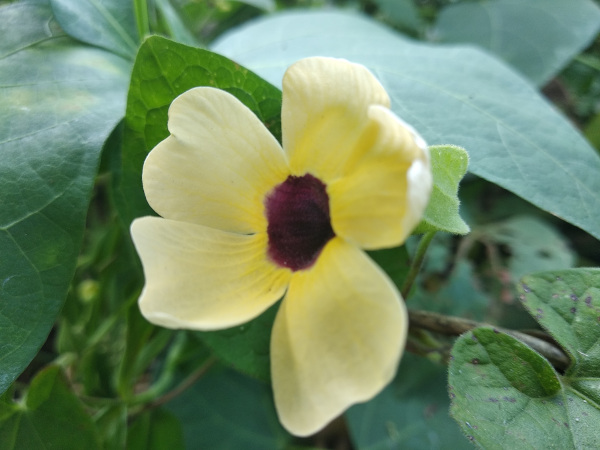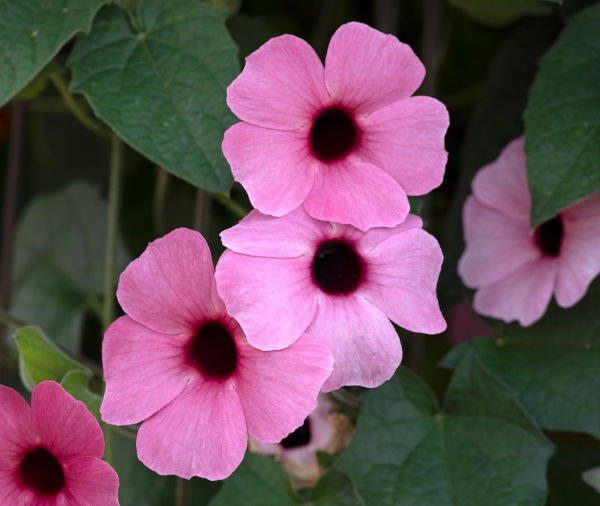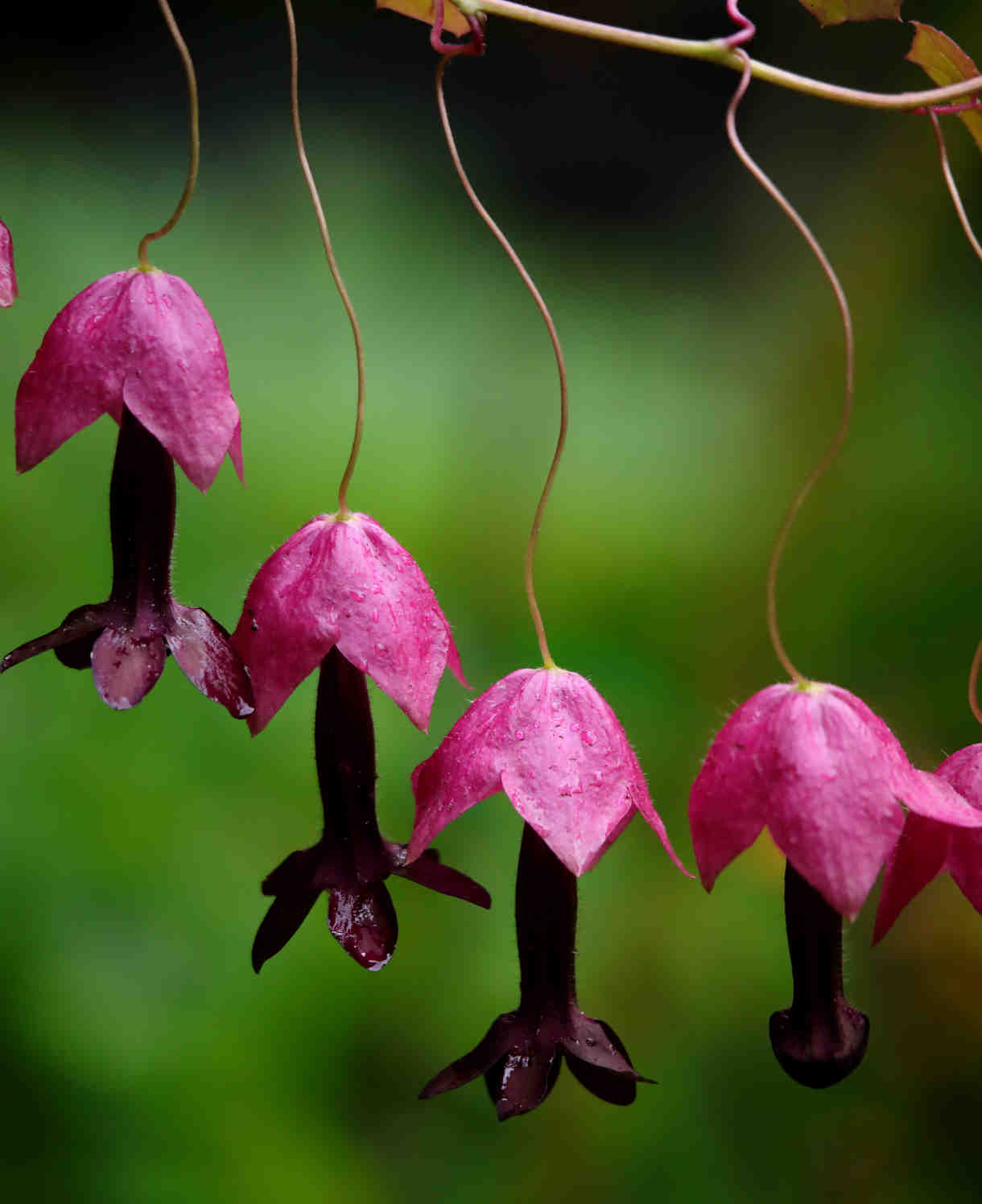How to grow Thunbergia
Native to Tropical Africa, Thunbergia - also known as Black-eyed Susan or Clock Vine - is a fast-growing flowering vine. Perfect for hanging baskets or as a climber, the flowers of the Thunbergia are red, orange, yellow or white in colour.
Thunbergia can be identified by its five flat overlapping petals and brown-purple centre. Thunbergia’s leaves are green and grow opposite each other - it can be grown as a perennial plant in hotter climates. In the UK, Thunbergia is mainly grown as an annual.
Growing as tall as 2.5m in height with a 1m spread, you can expect your Thunbergia to grow quite tall in a single season. Thunbergia can be trained to climb a trellis an add some tall, vibrant colour to your garden in the summer and autumn months. Its bright colours also attract pollinators such as bees and butterflies.
Ready for a splash of summer colour? Read on to find out more about this speedy grower...

Key Information
Soil pH
Position
Hardiness


Where & when to plant Thunbergia
Thunbergia enjoys a full sun position with moist, well-draining soil. While previously known as a conservatory plant, Thunbergia is often grown in the UK as an annual outdoor plant. Thunbergia is ideal for hanging baskets, as a trained climber or even as a houseplant.
How to plant Thunbergia
If you order young plants and they arrive early – pot them up using a proprietary compost and grow them on away from the risk of frost, ensuring they have access to light and moisture.
Plants which arrive already potted should be kept in the same way until the risk of frost has passed.
By late May most of the UK is deemed frost free and you can prepare the site for your Thunbergia – be it in the ground, in a basket or in a container. Remember it will need support if you are growing as a climber – trellis, wire or ever bean sticks are ideal.
Plant in an open, well-drained soil which will retain some moisture. Dig a hole slightly larger than the pot and plant at the same level in the ground, replacing the soil and tamping down to secure your plant.
Tie in any longer growth to start the climbing process (where appropriate) and continue to do so as the plant invigorates and establishes.

What to plant with Thunbergia
While Thunbergia can be grown in a garden border, it is best placed in a hanging basket or as a climber. Thunbergia grows quickly and can climb on a trellis with training. So, consider pairing with other full-sun-loving climbers such as the red and yellow ‘Spanish flag’ or Ipomoea lobata, ‘Chilean glory flower’ with its red chilli-shaped flowers, or ‘Purple bell vine’ Rhodochiton atrosanguineus.



How to care for Thunbergia
Pruning & Deadheading
Remove any dead, diseased or dying foliage from the plant as it grows. You can cut back your Thunbergia in autumn/winter if you decide to grow it as a perennial, or leave it as is to provide seeds for birds. As an annual, it can be left to die over the winter.
Watering
Thunbergia is not drought tolerant so it needs plenty of water to keep it going. This applies even more so when it is young, or if you are experiencing extended periods of dry or hot weather.
Cold Protection
Thunbergia is classified as HH or half-hardy, which means it could struggle in lower temperatures. It is suggested that though tolerant to temperatures of as low as 1°C, Thunbergia will get damaged by frost. This is why many gardeners plant Thunbergia as an annual in the UK, rather than treating it as perennial.
Pests & Diseases
Although relatively pest-free, you may experience difficulties with whitefly and spider mites. You will see clumps of whitefly on your plant, sooty mould growth or small light dots on your leaves.
How to propagate Thunbergia
The best way to propagate Thunbergia is by cuttings. Start by taking a 12-20cm cutting from a healthy, established and sturdy section of the plant with clean scissors. As soon as you can, dip it into a cup of water because moisture will be lost once cut
Cut off the leaves at the bottom of the cutting, leaving a very small amount of leaf joint; leave one set of leaves at the top of the cutting as they are. Trim the very bottom of the cutting stem at a 45-degree angle, and lightly damage this part of the root by scraping with scissors to encourage new growth.
Add your cutting to a pot with well-draining potting soil and make sure it is deep enough that the soil will cover up to the section below the top leaves. Then, add plenty of water to the pot and add a plastic bag or cloche to create humidity. Make sure the pot benefits from sunlight - although not in direct sun - and water regularly for several weeks to help encourage growth
Generally speaking, it will take one or two months to root and establish. Once this is done, you can plant your Thunbergia cutting(s) in the soil outside - remembering to select a position with full sun and well-draining soil.
Common Thunbergia Questions
Does Thunbergia come back every year?
In frost-free climates, Thunbergia can be grown as a ‘tender perennial’. However, colder temperatures and frost will damage the plant, so it is mainly grown as an annual in the UK.
Does Thunbergia need full sun?
Thunbergia will grow best in full sun and moist soil. However, it will cope in periods of shade and cooler temperatures. Full sun means 6-8 hours of sunlight per day.
How do you care for Thunbergia?
Thunbergia enjoys full sun and moist soil, so you can care for your plant by making sure it is getting enough sunlight and plenty of water. However, be careful not to waterlog Thunbergia, as this will damage it too and may lead to root rot.





